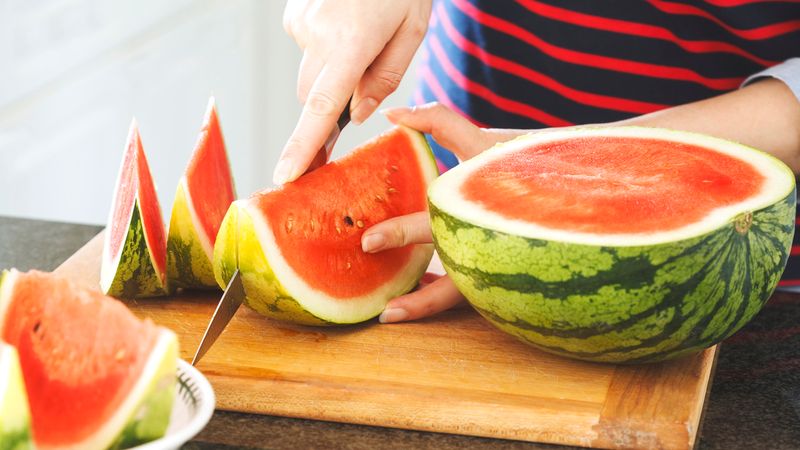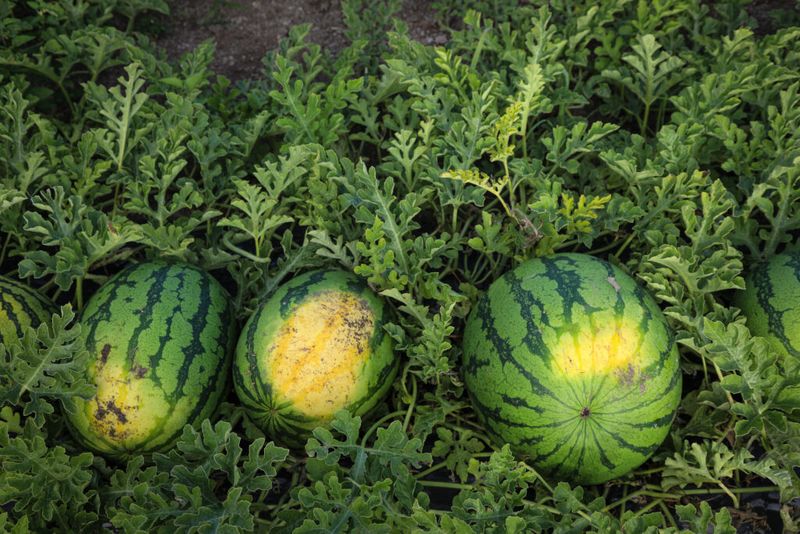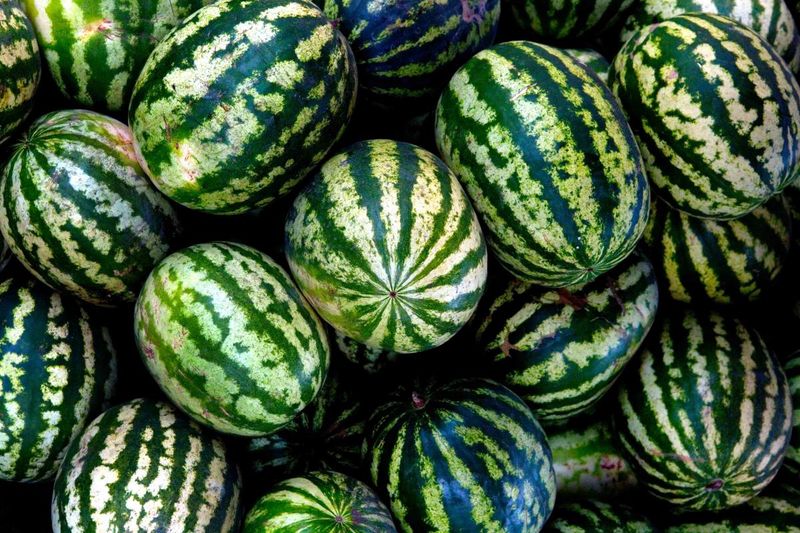Watermelon is a delicious summer treat, but like all fresh produce, it doesn’t last forever. Knowing when your watermelon has turned from sweet refreshment to trash-worthy is an essential kitchen skill.
These telltale signs will help you avoid an unpleasant surprise when you slice into your next melon.
1. Funky Smell When You Sniff

Trust your nose! Fresh watermelon should have almost no smell or a slightly sweet, cucumber-like aroma. If your melon gives off a sour, fermented, or just plain weird odor, that’s nature’s way of saying “don’t eat me!”
Your nose knows when something’s off, even before your eyes can tell.
2. Squishy Or Soft Exterior

Give that melon a gentle squeeze. A healthy watermelon should feel firm and solid with a hard rind that doesn’t give under pressure.
Soft spots or an overall mushy feel signals the flesh inside is breaking down. The once-crisp interior has likely turned to mush – definitely not what you want in a refreshing slice!
3. Mold Or Fuzzy Patches

Spotted something fuzzy growing on your watermelon? Game over! Those green, white, or black patches of mold are definite deal-breakers.
Mold doesn’t just stay on the surface – its invisible tendrils can penetrate deep into the fruit. Never try to salvage a moldy melon by cutting away the affected area.
4. Cracks Or Holes In The Rind

Nature designed watermelon rinds as protective armor. Once that armor gets breached with cracks or holes, bacteria march right in.
Small animals and insects love these entry points too. Even tiny cracks can lead to rapid spoilage as the melon’s defenses are compromised, letting air and microbes infiltrate the juicy flesh.
5. Dull, Hollow Sound When Tapped

The famous watermelon tap test works for spotting spoilage too! A fresh melon responds with a deep, resonant sound when you give it a knock.
If your knocking produces a dull thud or hollow sound, the insides might be drying out or turning mushy. Good melons have a distinctive bounce to their sound – like a drum with the perfect tension.
6. Discolored Or Dark Flesh Inside

Sliced open your melon to find something other than bright red or pink flesh? Not good news. Fresh watermelon should look vibrant and juicy.
Brownish, grayish, or unusually dark areas signal decomposition in progress. The flesh might also look dried out or have an unappetizing dull appearance instead of its trademark glossy shine.
7. Slimy Or Gritty Texture

Run your finger across the cut surface – fresh watermelon should feel smooth and moist but never slimy. That slippery film means bacteria have moved in and started a decomposition party.
Alternatively, a gritty or grainy texture suggests the fruit’s cellular structure is breaking down. Either way, these texture changes mean it’s time to say goodbye.
8. Fizzy Or Fermented Flavor

Accidentally taste test a suspicious melon? If it tastes fizzy, tangy, or like it’s been soaking in alcohol, you’ve got a fermenting watermelon on your hands!
Natural sugars in the fruit convert to alcohol as yeast goes to work. While some cultures deliberately ferment watermelon, the accidental version isn’t a culinary delight – it’s just plain spoiled.
9. Dried-Out Seeds Or Flesh

Watermelon should live up to its name – it should be WET! If the flesh looks dry or the seeds appear shriveled and loose, your melon is past its prime.
Fresh watermelon has plump, firmly embedded seeds and flesh that glistens with natural moisture. When that juiciness disappears, so does the flavor and the satisfying crunch we all love.
10. Overly Soft White Rind Layer

Examine that white layer between the green skin and red flesh. On fresh watermelon, it’s firm with a slight crunch.
When this layer turns soft, mushy, or yellowish, decomposition has begun. Many people overlook this subtle sign, but this transitional layer is often the first to show spoilage before the red flesh is affected.

